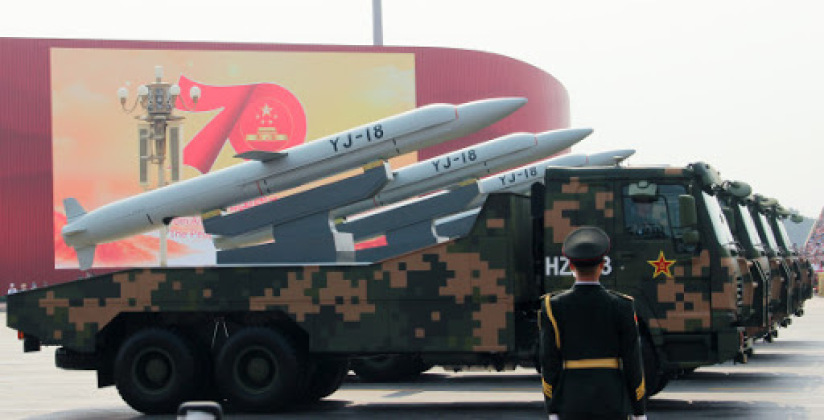The Chinese People’s Liberation Army Navy’s YJ-12 cruise missile is considered one of the most capable anti-ship cruise missiles in the world, combining a high Mach 4 speed with a 400km range and sea skimming trajectory to pose a major threat to enemy surface vessels. Thought to have entered service around 2014, the missile has been seen as a leading threat to U.S. and allied warships in the event of a potential conflict with the PLA, and has comfortable performances advantages against rival Western missile designs such as the Harpoon and Exocet which are relied on heavily by the U.S. and its allies. Following rising tensions in the Taiwan Strait, Taiwanese Navy commanders Chen Yi-cheng and Luo Zhen-yu have warned that the YJ-12 poses a major challenge to Taiwan’s navy in the event of a cross straits war. Writing for the Taiwanese military’s bimonthly Navy Professional journal they stressed: “The Taiwan Strait is no longer a natural barrier to deter a growing and powerful PLA from across the waterway, and none of the Taiwan warships is able to deal with the powerful YJ-12. In such a military disparity, the Taiwanese military has to carefully assess its position and try to come up with innovative and asymmetric strategies to hit the enemy’s weakness.”

Regarding the origins of the missile, the commanders stated: “The YJ-12 is a mixture of Russian and Chinese supersonic missile technologies,” highlighting that the Soviet P-270 Moskit cruise missile likely influenced the design. They emphasised that YJ-12 warheads, which could reach targets within 30 seconds once fired, were almost impossible to intercept, while the missile’s range allowed it to be fired from well beyond the detection range of American early warning aircraft allowing them to effectively strike without warning. The need for Taiwan’s navy to develop countermeasures to the missile was stressed, with the service’s greater focus on submarines being one potential solution as the viability of a Taiwanese surface fleet grew increasingly limited. The proximity of Taiwan to the Chinese mainland, with the Taiwan Strait being under 130km at its narrowest, means that cruise missiles fired without their launch platforms leaving Chinese shores could effectively neutralise all Taiwanese naval assets. The YJ-12 is currently deployed from both the air and from PLA Navy surface vessels, with H-6 bombers being the first launch platforms and older Type 051B Class and Russian built Sovremenny Class destroyers having since been modernised to accommodate the missiles as their primary armaments.

Despite its high performance the YJ-12 is not considered the PLA’s most capable anti ship missile, or even the most capable anti ship cruise missile available for Chinese surface ships, with the YJ-18 that subsequently entered service providing a longer 550-600km range and equipping the country’s Type 055 and Type 052D class destroyers. The overwhelming superiority these missiles have over those fielded by Taiwanese ships has led some assessments to conclude that a single Type 052D Class destroyer could neutralise the entire Taiwanese surface fleet using them. The balance of power in the Taiwan Strait, which was previously near parity between Taiwan and the mainland in the 1990s, has grown increasingly favourable for the PLA with anti ship cruise missile capabilities providing just one example. The expected development of a hypersonic anti ship cruise missile under the YJ-XX program, which could combine a speed close to Mach 9 with a range exceeding 1000km as the Russian Zicron does, would only make the discrepancy more overwhelming, particularly when deployed from new Type 055 Class destroyers which are widely considered the world’s most capable. The two rival governments in Beijing and Taipei, officially the respective People’s Republic of China and the Republic of China, remain technically at war with both claiming in their constitutions to be the sole legitimate governments of the Chinese nation, although the Taipei government lacks recognition from the United Nations and the large majority of UN member states.
